Zahraa S. Abdallah
KnowEEG: Explainable Knowledge Driven EEG Classification
May 01, 2025



Abstract:Electroencephalography (EEG) is a method of recording brain activity that shows significant promise in applications ranging from disease classification to emotion detection and brain-computer interfaces. Recent advances in deep learning have improved EEG classification performance yet model explainability remains an issue. To address this key limitation of explainability we introduce KnowEEG; a novel explainable machine learning approach for EEG classification. KnowEEG extracts a comprehensive set of per-electrode features, filters them using statistical tests, and integrates between-electrode connectivity statistics. These features are then input to our modified Random Forest model (Fusion Forest) that balances per electrode statistics with between electrode connectivity features in growing the trees of the forest. By incorporating knowledge from both the generalized time-series and EEG-specific domains, KnowEEG achieves performance comparable to or exceeding state-of-the-art deep learning models across five different classification tasks: emotion detection, mental workload classification, eyes open/closed detection, abnormal EEG classification, and event detection. In addition to high performance, KnowEEG provides inherent explainability through feature importance scores for understandable features. We demonstrate by example on the eyes closed/open classification task that this explainability can be used to discover knowledge about the classes. This discovered knowledge for eyes open/closed classification was proven to be correct by current neuroscience literature. Therefore, the impact of KnowEEG will be significant for domains where EEG explainability is critical such as healthcare.
Towards deployment-centric multimodal AI beyond vision and language
Apr 04, 2025Abstract:Multimodal artificial intelligence (AI) integrates diverse types of data via machine learning to improve understanding, prediction, and decision-making across disciplines such as healthcare, science, and engineering. However, most multimodal AI advances focus on models for vision and language data, while their deployability remains a key challenge. We advocate a deployment-centric workflow that incorporates deployment constraints early to reduce the likelihood of undeployable solutions, complementing data-centric and model-centric approaches. We also emphasise deeper integration across multiple levels of multimodality and multidisciplinary collaboration to significantly broaden the research scope beyond vision and language. To facilitate this approach, we identify common multimodal-AI-specific challenges shared across disciplines and examine three real-world use cases: pandemic response, self-driving car design, and climate change adaptation, drawing expertise from healthcare, social science, engineering, science, sustainability, and finance. By fostering multidisciplinary dialogue and open research practices, our community can accelerate deployment-centric development for broad societal impact.
Investigating Brain Connectivity and Regional Statistics from EEG for early stage Parkinson's Classification
Aug 01, 2024Abstract:We evaluate the effectiveness of combining brain connectivity metrics with signal statistics for early stage Parkinson's Disease (PD) classification using electroencephalogram data (EEG). The data is from 5 arousal states - wakeful and four sleep stages (N1, N2, N3 and REM). Our pipeline uses an Ada Boost model for classification on a challenging early stage PD classification task with with only 30 participants (11 PD , 19 Healthy Control). Evaluating 9 brain connectivity metrics we find the best connectivity metric to be different for each arousal state with Phase Lag Index achieving the highest individual classification accuracy of 86\% on N1 data. Further to this our pipeline using regional signal statistics achieves an accuracy of 78\%, using brain connectivity only achieves an accuracy of 86\% whereas combining the two achieves a best accuracy of 91\%. This best performance is achieved on N1 data using Phase Lag Index (PLI) combined with statistics derived from the frequency characteristics of the EEG signal. This model also achieves a recall of 80 \% and precision of 96\%. Furthermore we find that on data from each arousal state, combining PLI with regional signal statistics improves classification accuracy versus using signal statistics or brain connectivity alone. Thus we conclude that combining brain connectivity statistics with regional EEG statistics is optimal for classifier performance on early stage Parkinson's. Additionally, we find outperformance of N1 EEG for classification of Parkinson's and expect this could be due to disrupted N1 sleep in PD. This should be explored in future work.
RED CoMETS: An ensemble classifier for symbolically represented multivariate time series
Jul 25, 2023Abstract:Multivariate time series classification is a rapidly growing research field with practical applications in finance, healthcare, engineering, and more. The complexity of classifying multivariate time series data arises from its high dimensionality, temporal dependencies, and varying lengths. This paper introduces a novel ensemble classifier called RED CoMETS (Random Enhanced Co-eye for Multivariate Time Series), which addresses these challenges. RED CoMETS builds upon the success of Co-eye, an ensemble classifier specifically designed for symbolically represented univariate time series, and extends its capabilities to handle multivariate data. The performance of RED CoMETS is evaluated on benchmark datasets from the UCR archive, where it demonstrates competitive accuracy when compared to state-of-the-art techniques in multivariate settings. Notably, it achieves the highest reported accuracy in the literature for the 'HandMovementDirection' dataset. Moreover, the proposed method significantly reduces computation time compared to Co-eye, making it an efficient and effective choice for multivariate time series classification.
Transfer Learning and Class Decomposition for Detecting the Cognitive Decline of Alzheimer Disease
Jan 31, 2023



Abstract:Early diagnosis of Alzheimer's disease (AD) is essential in preventing the disease's progression. Therefore, detecting AD from neuroimaging data such as structural magnetic resonance imaging (sMRI) has been a topic of intense investigation in recent years. Deep learning has gained considerable attention in Alzheimer's detection. However, training a convolutional neural network from scratch is challenging since it demands more computational time and a significant amount of annotated data. By transferring knowledge learned from other image recognition tasks to medical image classification, transfer learning can provide a promising and effective solution. Irregularities in the dataset distribution present another difficulty. Class decomposition can tackle this issue by simplifying learning a dataset's class boundaries. Motivated by these approaches, this paper proposes a transfer learning method using class decomposition to detect Alzheimer's disease from sMRI images. We use two ImageNet-trained architectures: VGG19 and ResNet50, and an entropy-based technique to determine the most informative images. The proposed model achieved state-of-the-art performance in the Alzheimer's disease (AD) vs mild cognitive impairment (MCI) vs cognitively normal (CN) classification task with a 3\% increase in accuracy from what is reported in the literature.
A Time Series Approach to Parkinson's Disease Classification from EEG
Jan 20, 2023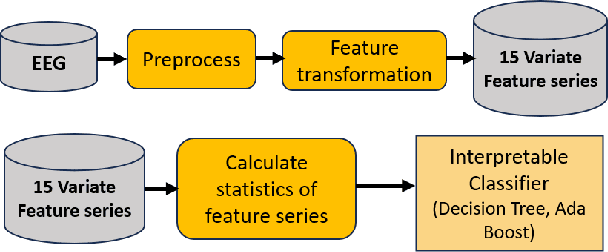

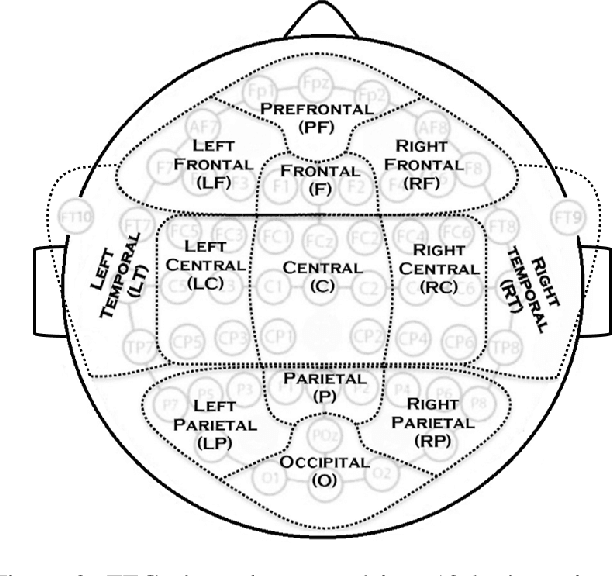
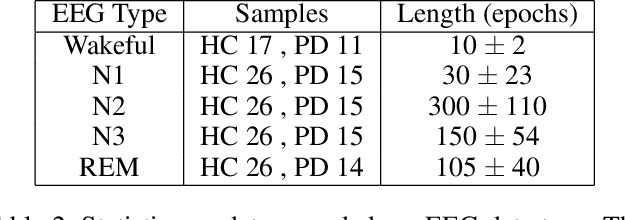
Abstract:Firstly, we present a novel representation for EEG data, a 7-variate series of band power coefficients, which enables the use of (previously inaccessible) time series classification methods. Specifically, we implement the multi-resolution representation-based time series classification method MrSQL. This is deployed on a challenging early-stage Parkinson's dataset that includes wakeful and sleep EEG. Initial results are promising with over 90% accuracy achieved on all EEG data types used. Secondly, we present a framework that enables high-importance data types and brain regions for classification to be identified. Using our framework, we find that, across different EEG data types, it is the Prefrontal brain region that has the most predictive power for the presence of Parkinson's Disease. This outperformance was statistically significant versus ten of the twelve other brain regions (not significant versus adjacent Left Frontal and Right Frontal regions). The Prefrontal region of the brain is important for higher-order cognitive processes and our results align with studies that have shown neural dysfunction in the prefrontal cortex in Parkinson's Disease.
Temporal patterns in insulin needs for Type 1 diabetes
Nov 17, 2022



Abstract:Type 1 Diabetes (T1D) is a chronic condition where the body produces little or no insulin, a hormone required for the cells to use blood glucose (BG) for energy and to regulate BG levels in the body. Finding the right insulin dose and time remains a complex, challenging and as yet unsolved control task. In this study, we use the OpenAPS Data Commons dataset, which is an extensive dataset collected in real-life conditions, to discover temporal patterns in insulin need driven by well-known factors such as carbohydrates as well as potentially novel factors. We utilised various time series techniques to spot such patterns using matrix profile and multi-variate clustering. The better we understand T1D and the factors impacting insulin needs, the more we can contribute to building data-driven technology for T1D treatments.
IMG-NILM: A Deep learning NILM approach using energy heatmaps
Jul 12, 2022



Abstract:Energy disaggregation estimates appliance-by-appliance electricity consumption from a single meter that measures the whole home's electricity demand. Compared with intrusive load monitoring, NILM (Non-intrusive load monitoring) is low cost, easy to deploy, and flexible. In this paper, we propose a new method, coined IMG-NILM, that utilises convolutional neural networks (CNN) to disaggregate electricity data represented as images. CNN is proven to be efficient with images, hence, instead of the traditional representation of electricity data as time series, data is transformed into heatmaps with higher electricity readings portrayed as 'hotter' colours. The image representation is then used in CNN to detect the signature of an appliance from aggregated data. IMG-NILM is flexible and shows consistent performance in disaggregating various types of appliances; including single and multiple states. It attains a test accuracy of up to 93% on the UK dale dataset within a single house, where a substantial number of appliances are present. In more challenging settings where electricity data is collected from different houses, IMG-NILM attains also a very good average accuracy of 85%.
Investigating Temporal Convolutional Neural Networks for Satellite Image Time Series Classification
Apr 13, 2022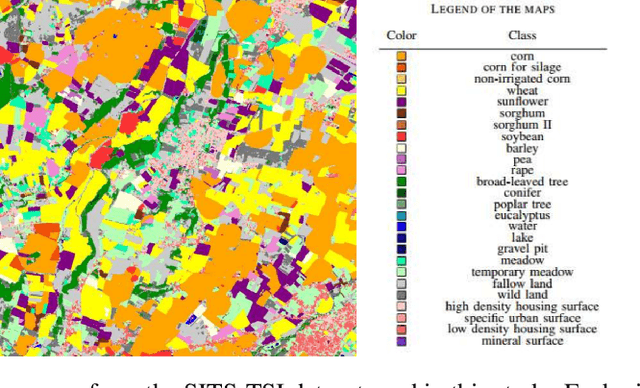


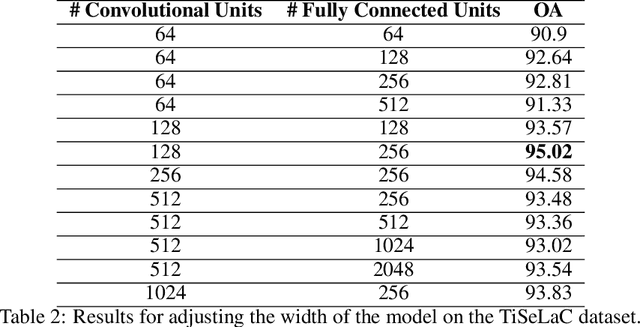
Abstract:Satellite Image Time Series (SITS) of the Earth's surface provide detailed land cover maps, with their quality in the spatial and temporal dimensions consistently improving. These image time series are integral for developing systems that aim to produce accurate, up-to-date land cover maps of the Earth's surface. Applications are wide-ranging, with notable examples including ecosystem mapping, vegetation process monitoring and anthropogenic land-use change tracking. Recently proposed methods for SITS classification have demonstrated respectable merit, but these methods tend to lack native mechanisms that exploit the temporal dimension of the data; commonly resulting in extensive data pre-processing prohibitively long training times. To overcome these shortcomings, this paper seeks to study and enhance the newly proposed method for SITS classification from literature; namely Temporal CNNs. Comprehensive experiments are carried out on two benchmark SITS datasets with the results demonstrating that Temporal CNNs display a superior or competitive performance to the benchmark algorithms for both datasets. Investigations into the Temporal CNNs architecture also highlighted the non-trivial task of optimising the model for a new dataset.
Transfer Learning Approach for Detecting Psychological Distress in Brexit Tweets
Jan 25, 2021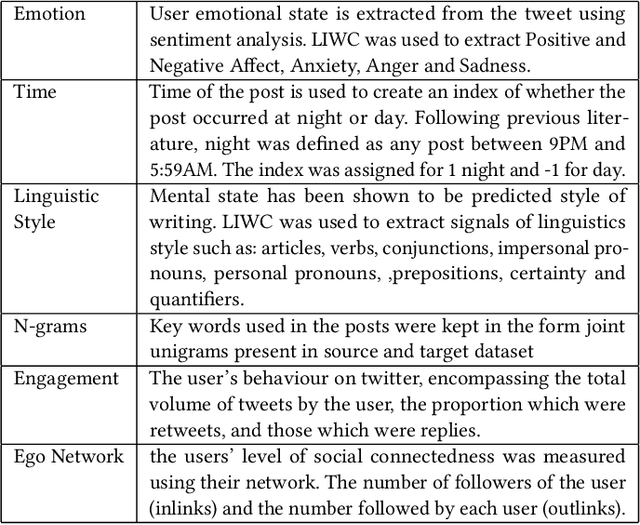
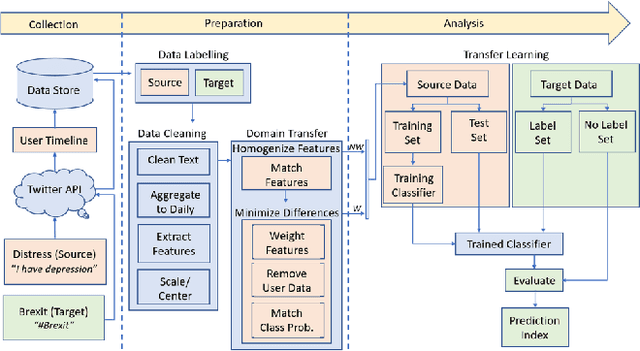
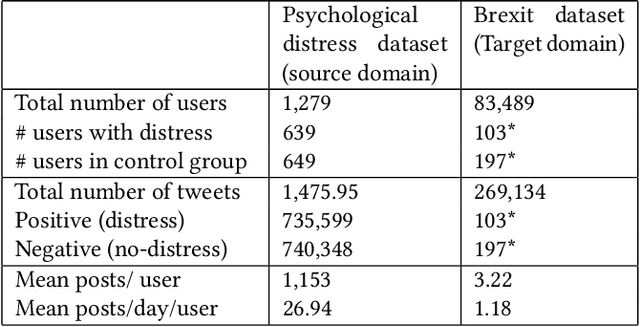
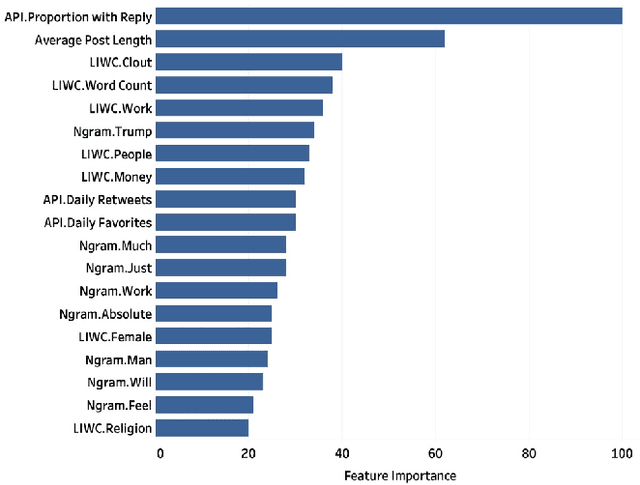
Abstract:In 2016, United Kingdom (UK) citizens voted to leave the European Union (EU), which was officially implemented in 2020. During this period, UK residents experienced a great deal of uncertainty around the UK's continued relationship with the EU. Many people have used social media platforms to express their emotions about this critical event. Sentiment analysis has been recently considered as an important tool for detecting mental well-being in Twitter contents. However, detecting the psychological distress status in political-related tweets is a challenging task due to the lack of explicit sentences describing the depressive or anxiety status. To address this problem, this paper leverages a transfer learning approach for sentiment analysis to measure the non-clinical psychological distress status in Brexit tweets. The framework transfers the knowledge learnt from self-reported psychological distress tweets (source domain) to detect the distress status in Brexit tweets (target domain). The framework applies a domain adaptation technique to decrease the impact of negative transfer between source and target domains. The paper also introduces a Brexit distress index that can be used to detect levels of psychological distress of individuals in Brexit tweets. We design an experiment that includes data from both domains. The proposed model is able to detect the non-clinical psychological distress status in Brexit tweets with an accuracy of 66% and 62% on the source and target domains, respectively.
 Add to Chrome
Add to Chrome Add to Firefox
Add to Firefox Add to Edge
Add to Edge